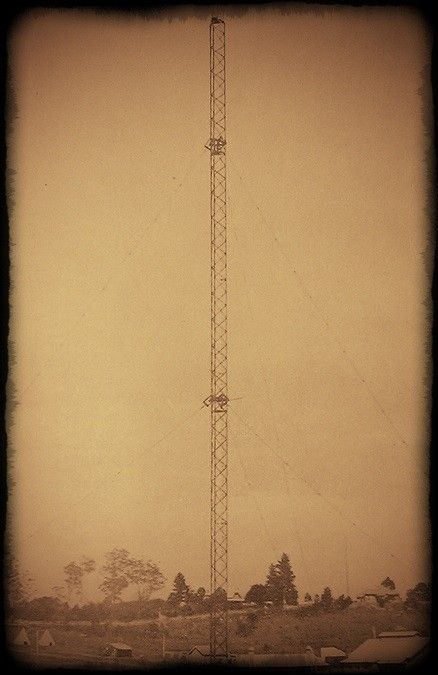
Pennant Hills Wireless Station, 1912-1918, photo from Electrical Commissioner, F G Cresswell, copy from photo-mechanical print in The Australian Navy, Jose, 1935
From 1914 to 1918 Pennant Hills in Western Sydney was the centre of the Commonwealth’s wireless network and it was from here that the Navy monitored wireless signals from around the world. The station, along with it’s 400 foot mast, was removed long ago was and now nothing remains on what is now a busy intersection on the corner of Pennant Hills Road and North Rocks Road (near the current Roselea Reserve, and once the site of Smith’s Orchard).
But in its day it was the very centre of news about the war and had dozens of people intercepting signals and attempting to decipher encrypted messages from Germany and her partners. The station was proposed a few years before the war, when all wireless stations were under the jurisdiction of the Australian Postal Service.
In July, 1910, Captain Creswell visited Sydney to inspect possible sites for the Wireless Station eventually chose an inland site because the station would be key to the Australian Pacific wireless network and of great military significance. The Post office preferred a site close to the sea to maximise its range but military concerns about its safety overruled commercial needs and forced its location inland, away from easy access by potential enemies.
In September, 1910, the Federal Executive Council approved the purchase of land at corner of Pennant Hills Road and North Rocks Road for the new wireless station. Although they couldn’t have known it at the time the location would prove to be an excellent choice when the First World War broke out a few years later.
By May 1911 the center mast and foundations were in place. The Clarence and Richmond Examiner when describing this new piece of technology in June 1912 claimed, perhaps with some exaggeration, that the 400 foot mast was the highest in the world, with the exception of the Eiffel Tower in Paris.
Eventually on 20 August 1912 the Post Office opened the station, which it referred to as “Radio Sydney”. The new station must have had a good broadcasting range for in 1913 Douglas Mawson was able to pick up signals from the Pennant Hills station while in the Antarctic.
As soon as war was seen to be imminent, all wireless stations in the Australian Commonwealth were, by an order-in-council of the 3rd of August 1914, placed under the control of the Naval Board, and a wireless censorship was established at 11 p.m. on that day.
By 1915, George James Weston, was officer in charge of the Pennant Hills wireless station as well as being the Inspector in Charge. In this capacity it was his duty to make sure that all private wireless sets were banned as only official wireless sets were to be used throughout the war. This also ensured the Commonwealth held a tight reign over censoring and distribution of information to the public.
References
The Royal Australian Navy, Arthur W Jose, Angus and Robertson, Sydney, 1935



